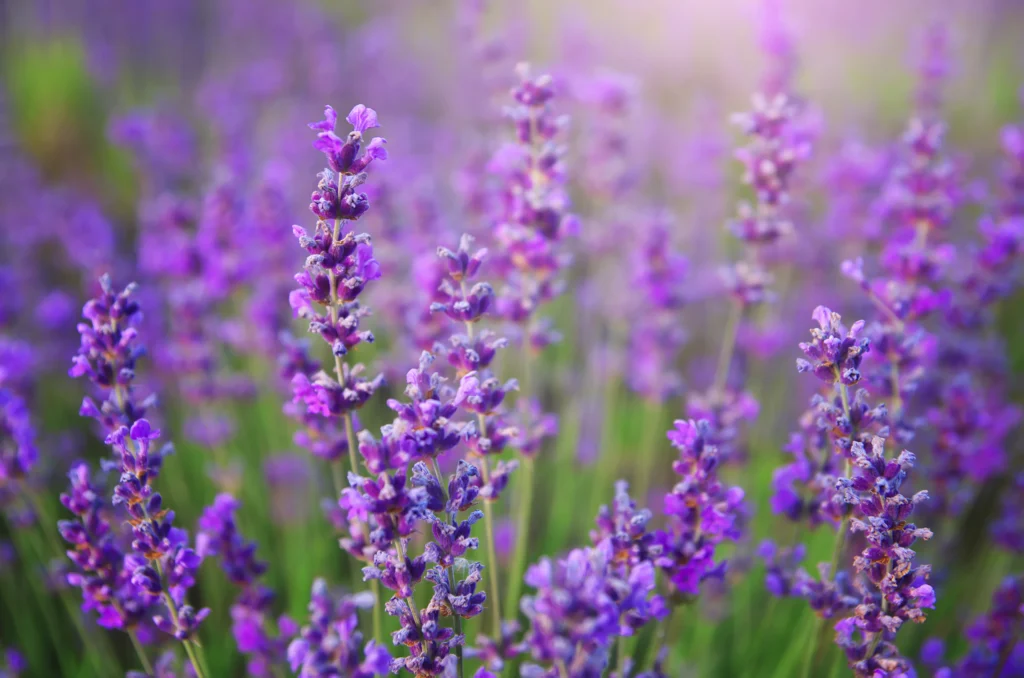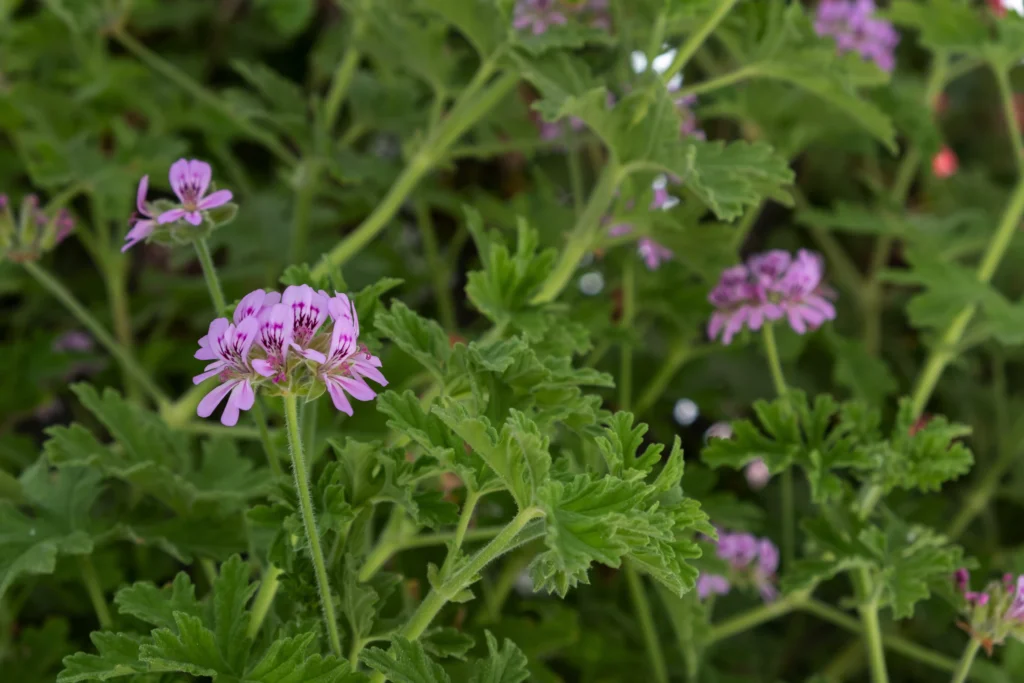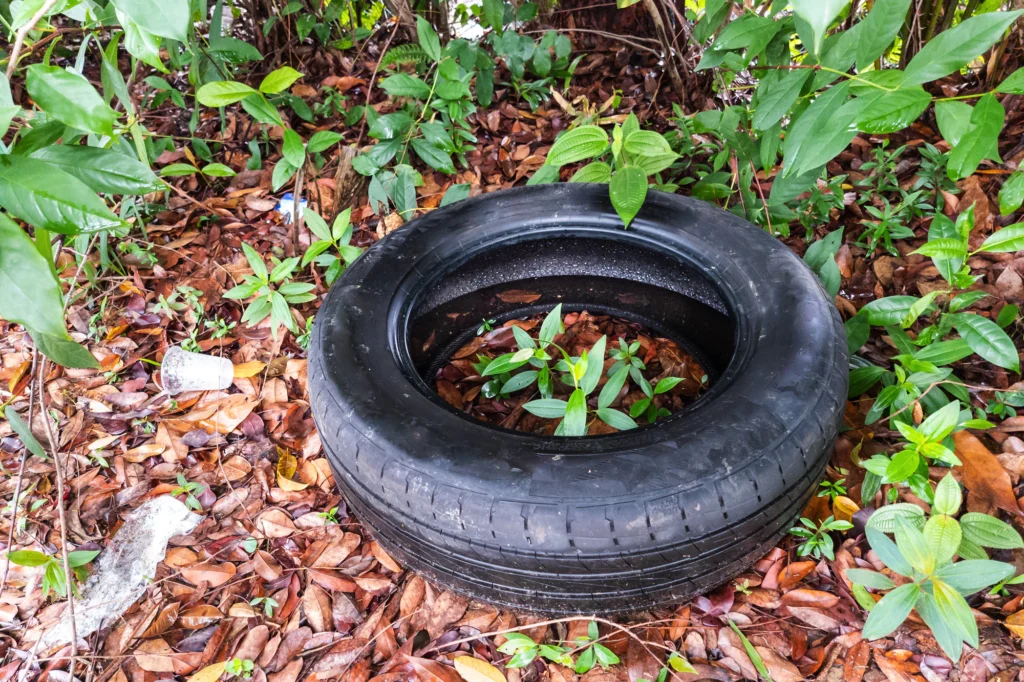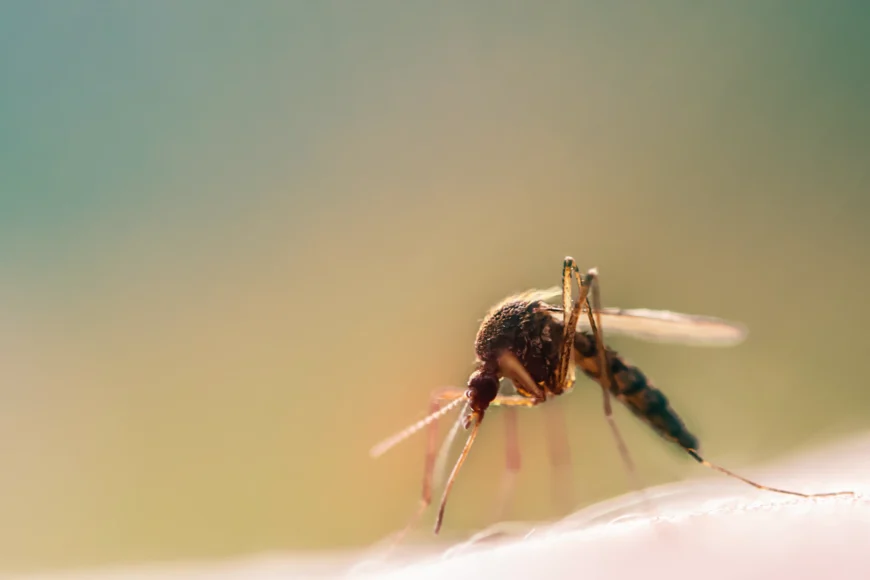Transform your yard into a stunning sanctuary while keeping pesky pests at bay with the power of perennial flowers. These remarkable blooms not only add vibrant colors and delightful fragrances to your outdoor space, but they also act as nature’s pest repellent, particularly against mosquitoes. With their natural properties, perennial flowers effectively deter these annoying insects, allowing you to enjoy your yard without the constant buzzing and itchy bites. From lavender and marigolds to citronella and catmint, there are numerous perennial flower options to choose from, each with its unique benefits. Not only do these flowers make your yard a picturesque haven, but they also provide a natural approach to pest control. Discover the beauty and functionality of perennial flowers as you create a mosquito-free oasis in your own backyard.
Benefits of planting perennial flowers in your yard
Perennial flowers offer a multitude of benefits when it comes to creating a beautiful and pest-free yard. Unlike annual flowers that require replanting each year, perennials come back year after year, providing a long-lasting and cost-effective solution to maintaining a vibrant garden. Additionally, their ability to repel pests adds an extra layer of functionality to their aesthetic appeal.
One of the main advantages of planting perennial flowers is their ability to attract beneficial insects. These insects, such as ladybugs and lacewings, prey on common garden pests like aphids and caterpillars, keeping their populations in check naturally. By creating a diverse and balanced ecosystem in your yard, perennial flowers not only repel pests but also promote a healthy and thriving garden.
Furthermore, perennial flowers require minimal maintenance once established, making them a practical choice for busy gardeners. Their deep root systems help them withstand drought conditions, reducing the need for constant watering. As a result, you can spend less time tending to your garden and more time enjoying its beauty.
In summary, planting perennial flowers in your yard offers a range of benefits, including long-term beauty, natural pest control, and low maintenance requirements. By incorporating these flowers into your garden, you can create a visually appealing and pest-free oasis that enhances your outdoor living experience.
How perennial flowers can repel pests, including mosquitoes
Mosquitoes are not only irritating but can also pose health risks by transmitting diseases. Fortunately, perennial flowers can play a significant role in keeping these blood-sucking pests at bay. Certain varieties of perennial flowers produce oils and scents that repel mosquitoes, acting as a natural deterrent without the need for harmful chemicals.
One of the most popular mosquito-repellent perennial flowers is lavender. Its aromatic scent is loved by humans but repels mosquitoes due to its high concentration of essential oils. Planting lavender near seating areas or doorways can help create a mosquito-free zone and add a delightful fragrance to your outdoor space.

Another effective perennial flower for mosquito control is the marigold. Its bright yellow and orange blooms not only add a cheerful touch to your garden but also emit a scent that repels mosquitoes. Planting marigolds around your patio or near windows can help keep these pesky insects away, allowing you to enjoy your outdoor activities without constant swatting.
Citronella, a popular ingredient in mosquito repellents, is another perennial flower with excellent pest-repelling properties. Its strong citrus scent masks the attractant scents that mosquitoes are drawn to, making it an effective natural repellent. Planting citronella near seating areas or using citronella oil in outdoor candles can provide additional protection against mosquitoes.

Catmint, a member of the mint family, is not only attractive to cats but also repels mosquitoes. Its fragrant leaves contain nepetalactone, a compound that acts as a natural mosquito repellent. Planting catmint in your garden or using its leaves as a natural mosquito repellent can help create a more enjoyable outdoor environment.
In conclusion, perennial flowers offer a natural and effective way to repel mosquitoes and other pests. By harnessing the power of their scents and essential oils, you can create a mosquito-free yard without relying on harmful chemicals. Incorporating lavender, marigolds, citronella, and catmint into your garden can help you enjoy your outdoor space without the annoyance of buzzing mosquitoes.
Types of perennial flowers that are effective at repelling pests
When it comes to choosing perennial flowers for pest control, there are several options to consider. Each of these flowers possesses unique properties that make them effective at repelling specific pests. By diversifying your garden with a variety of these pest-repellent perennials, you can create a more robust defense against unwanted visitors.
1. **Lavender**: Known for its calming scent and beautiful purple flowers, lavender is not only a favorite among gardeners but also a potent mosquito repellent. Its high concentration of essential oils, including linalool and linalyl acetate, makes it highly effective at repelling mosquitoes. Plant lavender in sunny areas of your yard and enjoy its natural beauty while keeping mosquitoes at bay.
2. **Marigolds**: With their vibrant yellow, orange, and red blooms, marigolds are a popular choice for adding a splash of color to any garden. These flowers also emit a strong scent that repels mosquitoes, making them an excellent choice for creating a mosquito-free zone. Plant marigolds near seating areas or around the perimeter of your yard to keep mosquitoes away.
3. **Citronella**: Known for its use in candles and insect repellents, citronella is a perennial grass that belongs to the lemongrass family. Its strong citrus scent masks the attractant scents that mosquitoes are drawn to, effectively repelling them. Plant citronella in pots or directly in your garden to create a barrier against mosquitoes.
4. **Catmint**: Catmint, also known as Nepeta cataria, is a member of the mint family and is loved by cats. However, its appealing scent causes the opposite effect on mosquitoes. The compound nepetalactone found in catmint acts as a natural mosquito repellent. Incorporate catmint into your garden to keep mosquitoes and other pests at bay while adding a touch of beauty.
5. **Rosemary**: This popular herb not only adds flavor to your culinary creations but also repels mosquitoes. Its fragrant leaves contain oils that mosquitoes find unpleasant, making rosemary a natural mosquito deterrent. Plant rosemary in pots near seating areas or incorporate it into your garden to enjoy its pest-repellent properties.
By incorporating these pest-repellent perennial flowers into your garden, you can create a visually stunning and pest-free oasis. Each of these flowers adds its unique touch of beauty while effectively repelling pests, allowing you to enjoy your outdoor space without the constant annoyance of buzzing insects.
Best practices for planting and caring for perennial flowers
To ensure the success of your perennial flower garden, it’s important to follow some best practices when it comes to planting and caring for these beautiful blooms. By providing the right conditions and maintenance, you can enjoy a thriving garden that not only repels pests but also enhances the overall aesthetic appeal of your yard.
1. **Choose the right location**: Most perennial flowers thrive in sunny areas, so choose a location in your yard that receives at least six hours of direct sunlight each day. Additionally, consider the soil conditions and moisture levels required by each type of perennial flower to ensure optimal growth.
2. **Prepare the soil**: Before planting your perennial flowers, prepare the soil by removing any weeds or debris. Loosen the soil and amend it with organic matter, such as compost, to improve drainage and provide essential nutrients for the plants.
3. **Plant at the right time**: Perennial flowers can be planted in either spring or fall, depending on the specific variety. Follow the recommended planting times for each type of perennial flower to give them the best chance of establishment and growth.
4. **Water appropriately**: While perennial flowers are generally more drought-tolerant than annuals, they still require regular watering, especially during dry periods. Water deeply and infrequently, allowing the soil to dry out slightly between waterings. Avoid overwatering, as this can lead to root rot and other issues.
5. **Mulch to conserve moisture**: Apply a layer of organic mulch around your perennial flowers to help conserve moisture, suppress weed growth, and regulate soil temperature. Mulch also adds a neat and finished look to your garden beds.
6. **Deadhead spent flowers**: To promote continuous blooming, remove spent flowers by deadheading. This process encourages the plant to redirect its energy into producing new blooms rather than setting seed.
7. **Divide and propagate**: Over time, perennial flowers may become overcrowded or develop a woody center. To maintain their health and vigor, divide them every few years. Dig up the clump, separate the individual plants, and replant them in fresh soil. Propagation can also be done through stem cuttings or root division.
By following these best practices, you can create an environment where your perennial flowers thrive, providing you with beautiful blooms and effective pest control year after year. Remember to tailor your care routine to the specific needs of each flower variety to ensure optimal growth and performance.
Designing a mosquito-free yard using perennial flowers
Creating a mosquito-free yard not only enhances your outdoor living experience but also helps protect you and your family from the potential health risks associated with mosquito bites. By strategically incorporating perennial flowers into your yard’s design, you can create a beautiful and functional space that effectively repels mosquitoes.
1. **Define seating and gathering areas**: Start by identifying the areas in your yard where you spend the most time, such as patios, decks, or seating areas. These are the spaces where you’ll want to focus on planting mosquito-repellent perennial flowers, such as lavender or marigolds. By surrounding these areas with pest-repellent plants, you can create a mosquito-free zone that encourages relaxation and enjoyment.
2. **Create a barrier**: Planting a barrier of mosquito-repellent flowers around the perimeter of your yard can help prevent mosquitoes from entering your outdoor space. Consider using citronella, catmint, or rosemary along fences or hedges to create a natural barrier against these pests. This not only adds visual interest but also provides an effective defense against mosquitoes.
3. **Utilize containers and hanging baskets**: If you have limited garden space, consider using containers and hanging baskets to incorporate mosquito-repellent perennial flowers into your yard. This allows you to place these plants strategically around seating areas or near entry points, such as windows and doors. Lavender, marigolds, and citronella are all suitable options for container gardening.
4. **Integrate mosquito-repellent plants into existing landscaping**: Don’t be afraid to incorporate mosquito-repellent perennial flowers into your existing landscaping. By intermixing these plants with other flowering perennials, shrubs, or trees, you can create a visually appealing and pest-resistant garden. Consider planting lavender or marigolds among your favorite flowers to add both beauty and functionality to your landscape.
5. **Consider height and texture**: When designing a mosquito-free yard, consider the height and texture of the perennial flowers you select. By incorporating a variety of heights and textures, you can create visual interest while also maximizing the effectiveness of your pest control efforts. Taller plants, such as citronella or catmint, can act as a natural backdrop, while lower-growing flowers like marigolds can provide a colorful border.
By incorporating these design principles and selecting the right combination of mosquito-repellent perennial flowers, you can create a yard that not only repels pests but also enhances the overall beauty and functionality of your outdoor space. Remember to consider your specific needs and preferences when designing your mosquito-free yard to ensure a space that you’ll love spending time in.
Natural pest repellents to use in conjunction with perennial flowers
While perennial flowers are effective at repelling pests, including mosquitoes, there are additional natural pest repellents that you can use in conjunction with these flowers to create a more robust defense against unwanted insects. By combining different pest control methods, you can create a yard that is both beautiful and pest-free.
1. **Essential oils**: Essential oils derived from plants have been used for centuries as natural pest repellents. Some essential oils, such as citronella, lavender, and eucalyptus, are particularly effective at repelling mosquitoes. You can dilute these oils in a carrier oil, such as coconut or jojoba oil, and apply them to your skin or clothing for added protection. Alternatively, you can create your own natural insect repellent spray by combining essential oils with water and a mild soap.
2. **Herbs and spices**: Many herbs and spices possess natural pest-repellent properties. For example, planting basil, mint, or lemongrass near your patio or seating areas can help deter mosquitoes. Additionally, scattering crushed garlic cloves or sprinkling cinnamon around your garden beds can repel a variety of pests, including aphids and ants.
3. **Natural predators**: Encouraging natural predators in your yard is another effective way to control pests. Ladybugs, lacewings, and praying mantises are beneficial insects that feed on common garden pests. By planting perennial flowers that attract these predators, such as daisies or yarrow, you can create a balanced ecosystem that keeps pests in check.
4. **Water management**: Mosquitoes breed in standing water, so it’s essential to eliminate any potential breeding sites in your yard. Regularly empty and clean bird baths, pet bowls, and other water containers to prevent the buildup of stagnant water.

By combining these natural pest repellents with perennial flowers, you can create a comprehensive pest control strategy that minimizes the presence of unwanted insects in your yard. Remember to use these methods in conjunction with proper planting and care practices to ensure the best results.
Creating a diverse and balanced ecosystem in your yard with perennial flowers
In addition to their pest-repellent properties, perennial flowers play a crucial role in creating a diverse and balanced ecosystem in your yard. By attracting beneficial insects and providing food sources for pollinators, these flowers contribute to the overall health and vitality of your garden.
One of the key benefits of perennial flowers is their ability to attract pollinators, such as bees, butterflies, and hummingbirds. These insects play a vital role in the pollination of plants, facilitating the production of fruits, vegetables, and seeds. By planting a variety of perennial flowers
Have Questions? Talk to the Gardening Experts at Thomas Greenhouse & Gardens.
We are Mukwonago’s hometown garden center, located in Walworth County. Our greenhouse is near Burlington, Lake Geneva, Racine and Waukesha.
Give us a call at 262-363-3807.


